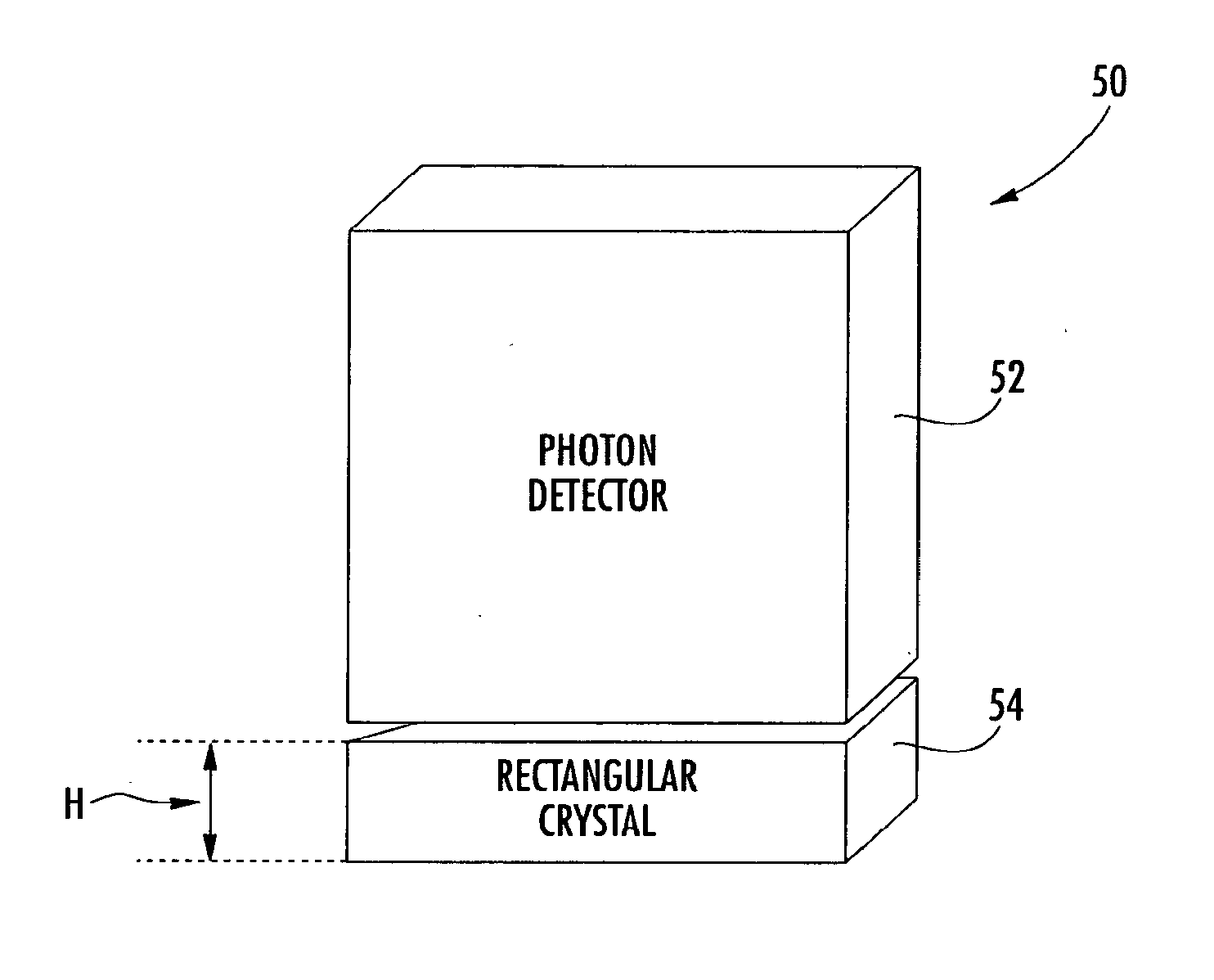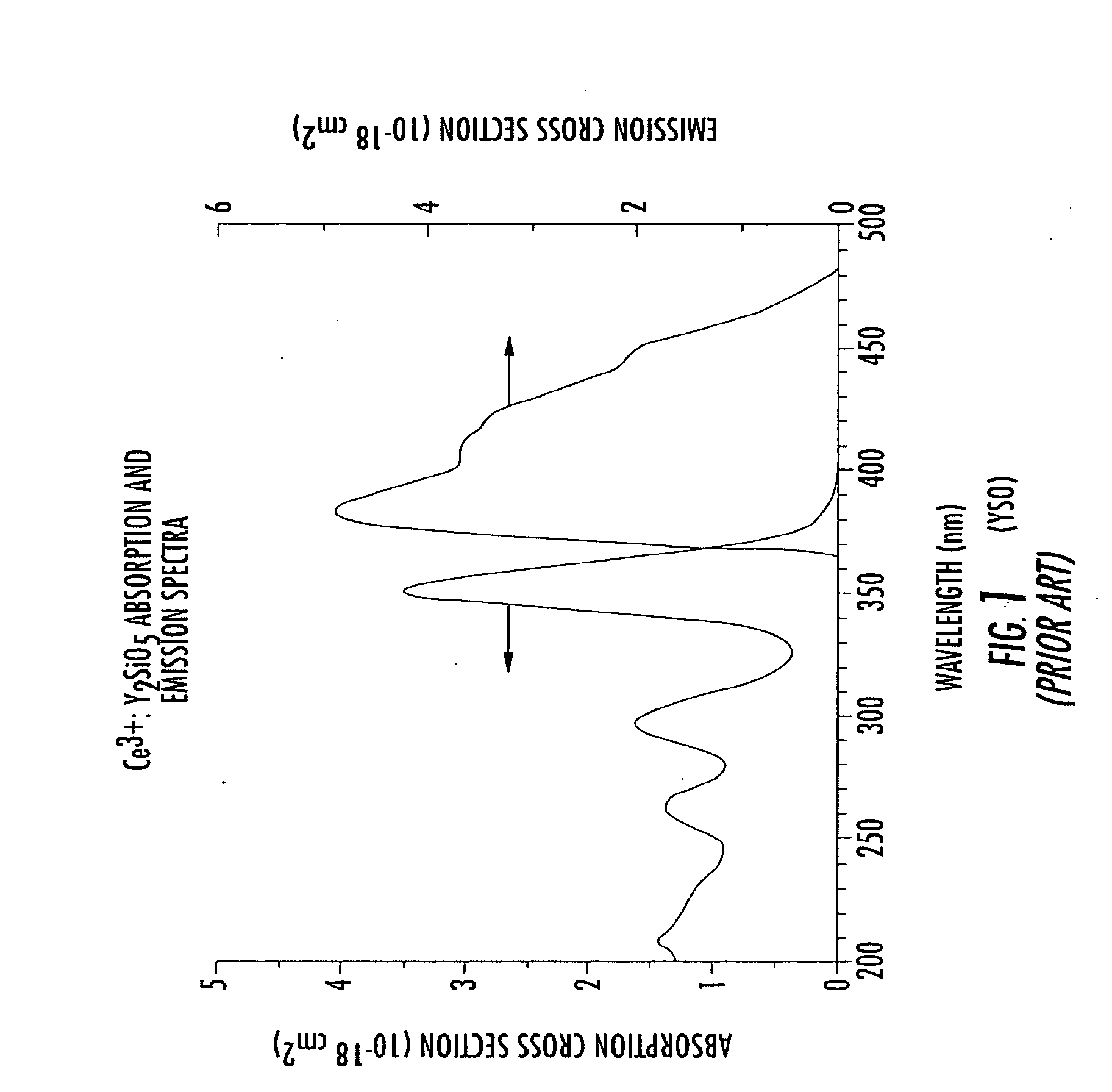Method of enhancing performance of cerium doped lutetium orthosilicate crystals and crystals produced thereby
a technology of cerium doped lutetium orthosilicate crystals and crystals, applied in the field of crystals, can solve problems such as performance adverse effects, and achieve the effect of enhancing the performance of lso crystals
- Summary
- Abstract
- Description
- Claims
- Application Information
AI Technical Summary
Benefits of technology
Problems solved by technology
Method used
Image
Examples
example 1
[0046] A Ce:LYSO crystal having y=0.05 was cut into pixels of approximately 4×6×30 mm, resulting in ten individual samples which were then placed in an oven heated to 1100° C. for a period of 60 hours. The light yield (LY), the FWHM of the energy peak and energy resolution (ER %) before and after this thermal oxygenation process are listed in Table 1. It should also be understood that all test results shown in Tables 1-9 were measured at standard room temperature of approximately 25° C.
TABLE 1Sample #12345678910Initial LY661657666651639603672618668638FWHM11511779102777582828162ER (%)17.417.811.915.712.112.412.213.312.19.760 hrs LY691722715729723705717709727723FWHM61636466615460626162ER (%)8.88.79.09.18.47.78.48.78.48.6
[0047] The results show a general increase of LY following thermal oxygenation. More importantly, the energy resolution improves dramatically after treatment.
example 2
[0048] A Ce:LSO crystal with y=0.00 is cut into 6×6×25 mm3 pixels and the samples are placed in an oven heated to 1100° C. for a period of 60 hours. The results are shown in Table 2. The initial pixel light yield is quite low, around 300, and the energy resolution is also poor. After thermal oxygenation, however, the pixel light yield has doubled ard shifted to 600. The samples still retained their original light yield peak and the LY became doubled-peaked with an energy resolution more than twice of the original. It was apparent that the same oxygenation treatment is insufficient for LSO, when compared to LYSO. In view of the first results, it was decided to treat the samples for an additional 60 hours at 1100° C. Following this second treatment, there is a clear improvement for both light yield performance and energy resolution. However, the double peak has not been totally eliminated, and three of the samples show two distinctly separated peaks.
TABLE 2Sample #123456789Initial28...
example 3
[0050] A Ce:YSO crystal with y=1.00 was cut into a small block of 6×6×10 mm3 and placed in an oven heated to 1100° C. for a period of 60 hours. The pixel has an initial light yield of 397 and an energy resolution of 10.6%. After the thermal oxygenation process, the crystal color turned to a light yellow, indicating conversion of at least part of the Ce dopant from the 3+ state to the 4+ state. Ce3+ is an efficient blue emitter whereas Ce4+ does not emit at all. Light yield measurement showed that the energy peak was located at 452, which is better than before treatment, and that post-treatment energy resolution is 10.0%. While thermal oxygenation does improve the light yield in this case, the improvement is more limited. It also seems that the oxygen diffusion is more easily obtained in YSO than LYSO, with concomittant oxidation of the cerium dopant. These results indicated a need for shortening the treatment time to prevent oxidation of cerium in this crystal.
PUM
| Property | Measurement | Unit |
|---|---|---|
| temperature | aaaaa | aaaaa |
| temperature | aaaaa | aaaaa |
| time | aaaaa | aaaaa |
Abstract
Description
Claims
Application Information
 Login to View More
Login to View More - R&D
- Intellectual Property
- Life Sciences
- Materials
- Tech Scout
- Unparalleled Data Quality
- Higher Quality Content
- 60% Fewer Hallucinations
Browse by: Latest US Patents, China's latest patents, Technical Efficacy Thesaurus, Application Domain, Technology Topic, Popular Technical Reports.
© 2025 PatSnap. All rights reserved.Legal|Privacy policy|Modern Slavery Act Transparency Statement|Sitemap|About US| Contact US: help@patsnap.com



